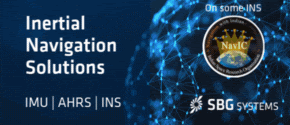Articles in the News Archives Category
National Geo Data Regulatory Authority Bill
The 8th National Spatial Data Infrastructure (NSDI) meet was held at New Delhi during 22-23 Dec 2008. The meeting was organised by Ministry of Science and Technology in association with FICCI. The meeting was inaugurated by Union Minister for Science and Technology and Earth Sciences, Mr Kapil Sibal. In his address, Mr Sibal told the gathering the government was preparing a legislation on sharing of geospatial data amongst different agencies – public and private. A bill in this regard, National Geospatial Data Regulatory Authority Bill, is to be introduced in the next session of Parliament and is likely to be cleared by the Cabinet by February 2009. The inaugural session was also addressed by Dr K Kasturirangan, Member of Parliament and Dr T Ramasamy, Secretary, Department of Science and Technology. During the meet, the Indian Geo-portal was also launched.
First indoors GPS application for Nokia Phones
Tagggit has launched their mobile application for Nokia S60 phones with an accurate Indoors GPS. It can fi nd a phone’s position indoors, within a few seconds and accurate to 15 feet. www.tagggit.com
Scanning the Heritage
In a unique project aimed at preserving the country’s rich heritage, the 16th century Humayun’s Tomb in New Delhi, India will become the first monument in the country to be measured to sub centimeter accuracy. Each stone will be measured using a high-density laser scan, colour images and 3D visualisation. Leica Geosystems High-Defi nition Survey (HDS) technology will assist archaeologists and conservationists in getting near accurate data and records of the entire Humayun’s Tomb complex within weeks. The technology developed by Leica Geosystems has been widely used at heritage sites across the globe, including the Blue Mosque in Turkey and Leaning Tower of Pisa in Italy. This project is being undertaken by the Aga Khan Trust for Culture as part of the ongoing partnership project with Archaeological Survey of India (ASI).
The process of HDS requires a 3D high defi nition laser scanner which scans the entire monument. While scanning depends on the size of the structure and takes only a few days’ time, documenting all the details can take a few weeks with 99% accuracy. This is a significant leap from the traditional method of using a measuring tape and other such tools which takes several months. According to offi cials, this technology will give the ASI an opportunity to document the 5,000 monuments in its charge in a short span of fi ve to six years.
Following are the excerpts of the interview conducted with Mr. Faheem Khan, Regional Segment Manager, GIS and Scanning, ISAK Region, Leica Geosystem about the HDS technology.
1. What are key the points about the procedure for scanning and documentation that will be used on the Humayun’s Tomb?
Leica Geosystems’ (HDS) High-Defi nition Surveying technology presents a quantum leap in technology offering users the ability to document sites and facilities, from crime scenes to oil platforms, in speeds, accuracy and quality that is not possible using traditional methods. This technology will allow site managers at Humayun’s Tomb to use the automatic data collection capabilities offered by the ScanStation and capture complete and accurate data in minutes and stream the results over the internet using the free and easy-to-use Leica TruView webpublishing solution.
2. How does ScanStation manage to give such high accuracies?
As indicated in various independent studies carried out around the world the Leica ScanStation features some of the lowest data noise levels and ultra-fi ne laser spot size in the industry. This coupled with our heritage in optics and distance measurement technology and manufacturing quality allow our customers to enjoy unprecedented quality and accuracies in measurement results.
3. What all other kind of application can a Scan Station is useful for?
The ScanStation is actively used by the Forensic community for anti-terrorist and forensic mapping activities. In addition, various engineering users deploy ScanStation to carry out accurate plant as-builts to support the design, installation, operations and documentation process. Mining users are also taking full advantage of the speed and completeness in which the data is captured to calculate accurate volumes, monitoring excavation and support in engineering efforts. Higher education community are today educating students across the departments – Civil Engineering, Geomatics, Geography etc. to train them in HDS technology.
One last example comes from the Survey fraternity where traditional topographic/civil survey is completed faster, cheaper and safer than traditional methods.
Associate members representing key GNSS user communities – including the US, Russia, European Union, China, India, and Japan – met at the 3rd meeting of the International Committee on GNSS (ICG-3), a voluntary UN backed association that brings together GNSS and augmentation providers. An appeal for collaborative efforts that would move beyond interoperability to “interchangeability” was made.
U-blox supplying GPSS for Longcheer chinese handsets
Chinese mobile phone designer Longcheer Holdings Ltd will integrate Swiss chip maker u-blox’ single chip UBX-G5010 GPS receiver into a series of handsets. The models built incorporating the device, the G600, G800, and G630 have just become available while the G801 and G900 are expected to begin shipments to the Chinese market later in this quarter. www.u-blox.com
EU developing ‘militarised’ space policy which could trigger ‘arms race’
The European Space Agency is accused of developing technology to dominate the “high ground” of space, including a multimillion pound EU Satellite Centre in Spain. The Transnational Institute, a Dutch think-tank, said: “EU-financed communication and spy satellites are slowly becoming reality and in the long term the inclusion of space-based missile defence and other more offensive uses of space are real options for an increasingly ambitious EU military space policy.” The report said French ambitions for the “militarisation of space” have led to arguments with Britain – particularly over Galileo, the much-delayed European global positioning system. President Nicolas Sarkozy of France, who currently holds the Presidency, said in June that space agenda was one of his priorities. Galileo would be vital in any European deployment of the sort of GPS-guided artillery now being used by the US in Iraq and Afghanistan
PIL demands removal of country’s images from Google Earth
Public interest litigation was filed in the Bombay High Court in India, has taken exception to easy access to satellite images of the vital installations in the country through Google Earth. The petition filed by Mumbai-based lawyer Amit Karkhanis has demanded removal of images of the country from Google Earth. The petition is filed against the backdrop of terror attacks in Mumbai. The petition is likely to come up for hearing on December 18.
Coastal navigation upgrade
The UK’s General Lighthouse Authorities (GLAs) have awarded a £4m contract to VT Communications for the upgrade of 14 Differential Global Positioning Service reference stations. The upgrade includes adding the capability to use modernised GPS signals that will be needed for tracking the future satellite navigations systems, Galileo and GLONASS. www.vtplc.com
New GIS software from India
The Space Applications Centre and Scanpoint Geomatics in Ahmedabad have released a new product, IGIS. It has been developed to a requirement from Indian Space research Organisation for a GIS software that could ingest data from its satellites and turn out information products. It contains an integrated image processing engine and a GIS. www.scanpointgeomatics.com
Canalys: EMEA Q3 GPSs phone shipments overtake PNDs
According to Canalys, shipments of PNDs in the Q3 to Europe, the Middle East, and Africa fell to 4.3 million from 4.8 million in Q2, while shipments of GPS-enabled smartphones soared, rising from 4.7 million to 10.4 million. Based on its latest research, the firm estimates that global shipments of PNDs in Q3 2008 rose 14% compared to Q3 2007, with North America and Asia Pacific still seeing considerable volume growth of 49% and 25% respectively. The risk to PND vendors is likely to rise further as the economic situation forces more consumers to take a hard look at their discretionary purchases/ www.canalys.com










 (5.00 out of 5)
(5.00 out of 5)